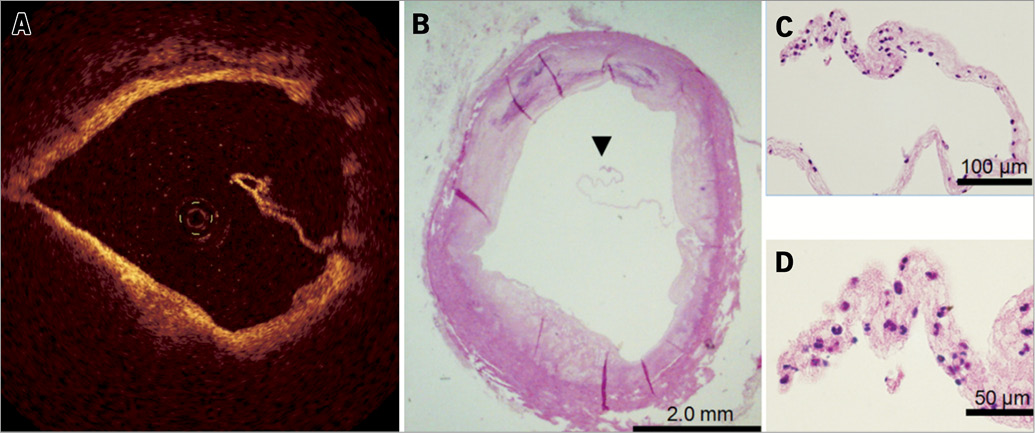Optical coherence tomography (OCT) has recently been developed as a high-resolution intravascular imaging modality, detecting small abnormal structures in the coronary lumen that could not be visualised by intravascular ultrasound (IVUS).
A 77-year-old man died with acute myelogenous leukemia. After he died, the coronary artery was imaged by OCT (ImageWire; LightLab Imaging, Westford, MA, USA) and IVUS (Atlantis SR Pro, 40 MHz; Boston Scientific, Natick, MA, USA). OCT clearly demonstrated a thin flat structure in the coronary lumen (Figure 1A, Moving image 1) but not in the IVUS image. This unique structural feature was demonstrated in corresponding histological images (Figure 1B, arrowhead). It revealed a white thrombus consisting mainly of platelets and white blood cells (Figure 1C and Figure 1D). This thin flat white thrombus was attached to the vessel wall without significant lumen stenosis.
High-resolution OCT was able to detect a unique feature of thrombus such as a thin flat structure in the coronary lumen. The clinical impact of this abnormal structure is still unclear. However, differentiation of intimal dissection might be necessary in the clinical setting.

Figure 1. A thin flat thrombus visualised by optical coherence tomography. A thin flat structure in the coronary lumen was visualised by optical coherence tomography (A). Histological images revealed a white thrombus consisting mainly of platelets and white blood cells (B-D).
Conflict of interest statement
The authors have no conflicts of interest to declare.
Online data supplement
Moving image 1. OCT demonstrating a thin flat structure protruding into the coronary lumen during pullback.
Supplementary data
To read the full content of this article, please download the PDF.
Moving image 1. OCT demonstrating a thin flat structure protruding into the coronary lumen during pullback.

